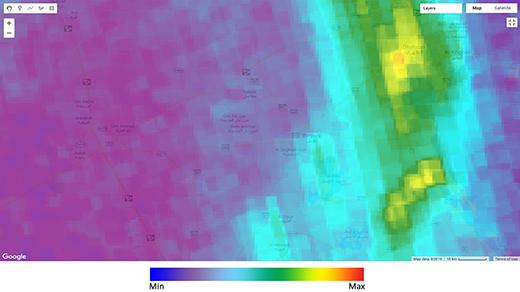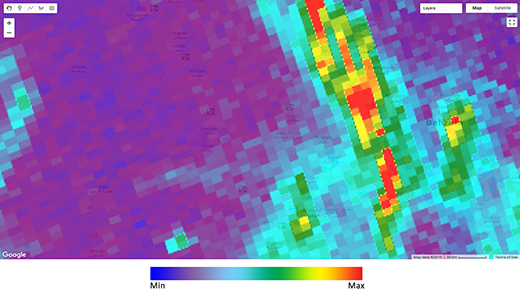
Environmental impact due to NO2 (Nitrogen dioxide) after missile attacks over Abqaiq, Saudi Arabia
Our remote sensing team at NCBC UET Peshawar draws attention towards the environmental impact of missile strikes at one of the world's largest oil refineries of ARAMCO. The analysis has been performed using sentinel-5P satellite data. The data represents pre and post imagery of the Abqaiq city, Saudi Arabia.

Fig.1 - Before Attack - After Attack - Damage to refinery
Apart from the political pointing by both Saudi and Irani governments, the factor of environmental pollution and human health is completely ignored in these types of incidents. Additional to other pollutants in the atmosphere, Nitrogen dioxide concentration is exponentially affected by these types of incidents. As Nitrogen dioxide is a nasty-smelling gas. Some nitrogen dioxide is formed naturally in the atmosphere by lightning and some is produced by plants, soil and water. However, only about 1% of the total amount of nitrogen dioxide found in our cities air is formed this way.Most of the nitrogen dioxide in cities comes from motor vehicle exhaust (about 80%). Other sources of nitrogen dioxide are petrol and metal refining, electricity generation from coal-fired power stations, other manufacturing industries and food processing.

Fig.2 - NO2 concentration of Pre Attack(2019-09-13) on Aramco Refinery

Fig.3 - NO2 concentration of Post Attack(2019-09-14) on Aramco Refinery
The above analysis has been performed using 14 Sep 2019 data. It clearly shows the excess of NO2 in the region of attack.
Nitrogen dioxide is a dangerous air pollutant because:
- It contributes to the formation of photochemical smog, which can have significant impacts on human health.
- The main effect of breathing in raised levels of nitrogen dioxide is the increased likelihood of respiratory problems.
- Nitrogen dioxide inflames the lining of the lungs, and it can reduce immunity to lung infections. This can cause problems such as wheezing, coughing, colds, flu and bronchitis.
- Increased levels of nitrogen dioxide can have significant impacts on people with asthma because it can cause more frequent and more intense attacks. Children with asthma and older people with heart disease are most at risk.
Courtesy:
Fig 1 is the courtesy of Dove satellite, while Fig 2 and 3 have been generated by using Google Earth Engine.